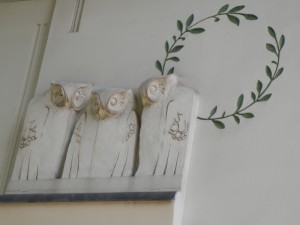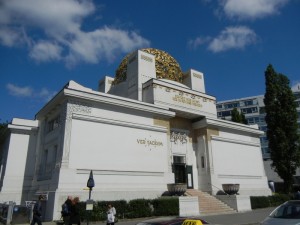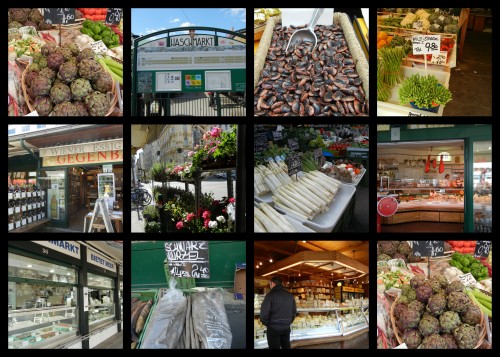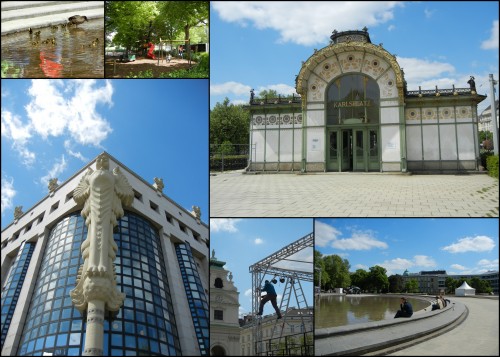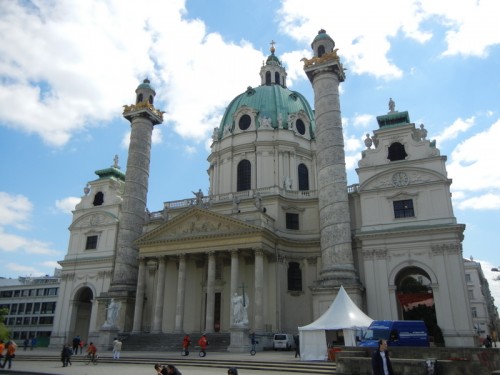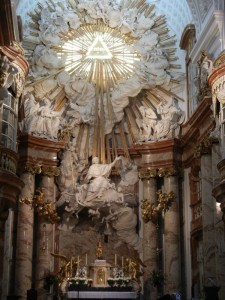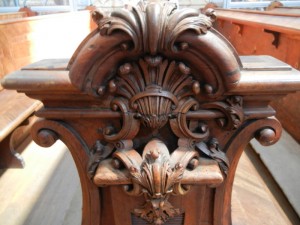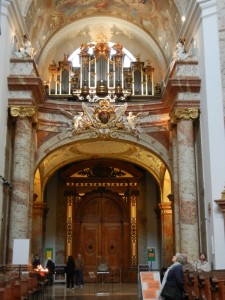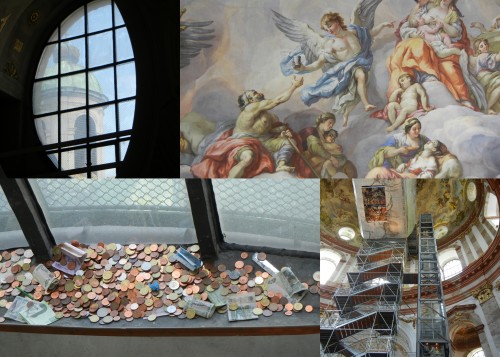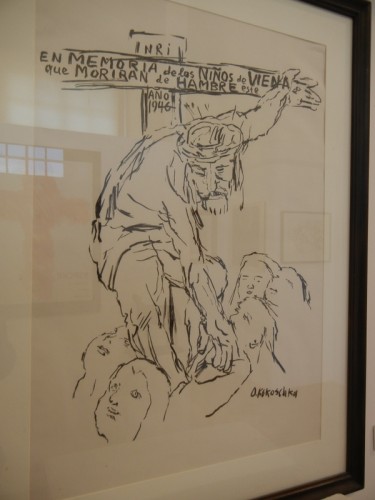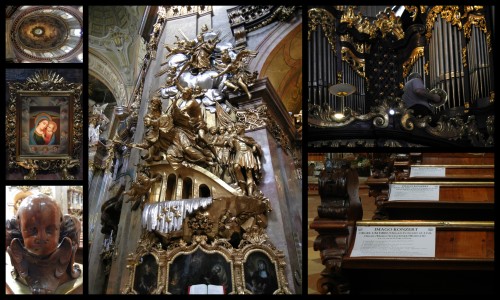The great thing about many European cities is that they are immensely walkable. When we’ve stayed in Vienna for a few days (mostly due to Bill’s professional meetings) I’ve had the time for and pleasure of walking around. Sometimes there is a small trip via the well-positioned and timely U-bahn but mostly it’s step by step. It’s my favorite way to explore a city. Maybe you don’t get to all the tourist destinations but you see so much more that way.
Quite near our favorite pension just off the Grauben, there are two lovely but quite different churches and then a little further away, the amazing and in-the-throes-of-reconstruction Karlskirche. Vienna is primarily a city that exudes Baroque/Rococo and Neo-classicism. Aside from Stephansdom, in its Gothic splendor, many of the churches and Important Buildings reflect the embellishment, massiveness and, to modern eyes, sometimes-over-the-top gilding of the late 17th century to early 19th century architectural styles, inside and out. Ruprechtskirche, a Romanesque church, and the Secession building, offer refreshing oasis in the midst of all this opulence.
Here are a few glimpses of some of the sites and impressions in my walk about Vienna.
On the way to Karlsplatz, one finds the lovely museum, the Secession, an icon of the Secessionist movement in Vienna. From Wikipedia: “Unlike other movements, there is not one style that unites the work of all artists who were part of the Vienna Secession. The Secession building could be considered the icon of the movement. Above its entrance was carved the phrase “to every age its art and to art its freedom”. Secession artists were concerned, above all else, with exploring the possibilities of art outside the confines of academic tradition.” The building is commemorated on the Austrian € 0,50 piece.
Across the street was a surprise, however! The Nashmarkt – hello Missoula Farmer’s Market X 100 ! Asparagus in 3 varieties: white, green and wild, cheese whose smell knocks one over, fish, meat, flowers, prepared food from any culture you can name! Too bad it was only 10:00 AM and not time to eat or drink!
As one heads from the Nashmarkt to Karlsplatz, you find the unexpected: The Vienna University of Technology with some pretty interesting ornamentation, the old Karlsplatz stadtbahn station (another icon of The Secessionist movement), a park with children, ducks on/people by the reflecting pool in front of the Karlskirche, and someone setting up for maybe an outdoor concert.
And then, right there, is Karlskirche, the Holy Roman Emperor Charles VI’s tribute to his saint namesake (Charles Borromeo), in gratitude for the end of the plague (1712).
It’s huge.
Inside it’s as baroque as they come,
but the outside is perhaps more famous, with the huge dome and the two towers of bas-relief. They are working on Karlskirche, restoring the frescos and other elements. You can take a ride almost all the way up to the very top, and then walk up the rest of the way, so I did. (You know, in the US, they would never permit people to do this!) I doubt I will ever be as close to a ceiling fresco again. It’s amazing how UN-detailed the painting is close up!
Rick Steves says not to bother with the museum that is also part of Karlskirche but I bothered anyway. Aside from a wonderful exhibit of modern photos of the church, there was an exhibit of various depictions of Christ. Amid the drawings and sculptures by school children, there was this, by artist Oskar Kokoschka whose work I had also seen in the Belvedere a few days before!
Later that day, I wandered into the Peterskirche, another baroque church, and just in time for a horn and organ concert. If I had been on some kind of timetable, I would have missed it altogether! This clip is actually from the rehearsal, just prior to the concert.
The next morning, I strolled past Peterskirche, and over toward the Danau Canal, and Ruprechtskirche, quite possibly my favorite church of all I’ve seen in Vienna.
Although there is currently some debate whether the Ruprechtskirche is truly the oldest church in Vienna (possibly founded between 796 and 829), it is simple in design and felt like an oasis to me. It is dedicated to Saint Rupert of Salzburg, patron saint of the salt merchants of Vienna and is located in one of the oldest parts of the city, the section of the Roman Vindobona. It’s not a parish church today but used for religious meetings…maybe even meditation? I had a little conversation (auf Deutsch) with the caretaker who was present about the age of glass (~700 years old). The one you see in the center below is Romanesque.
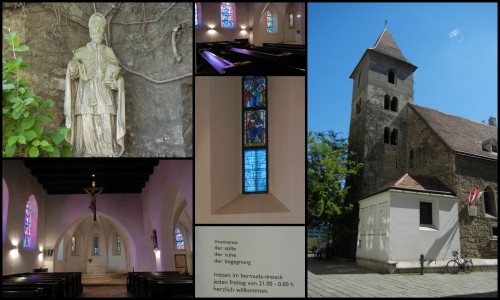
Ruprechtskirche was notable for the absence of tourists – only two other people and myself were there that morning to enjoy the stille. But we were the lucky ones.
Thanks, as always, for reading!

